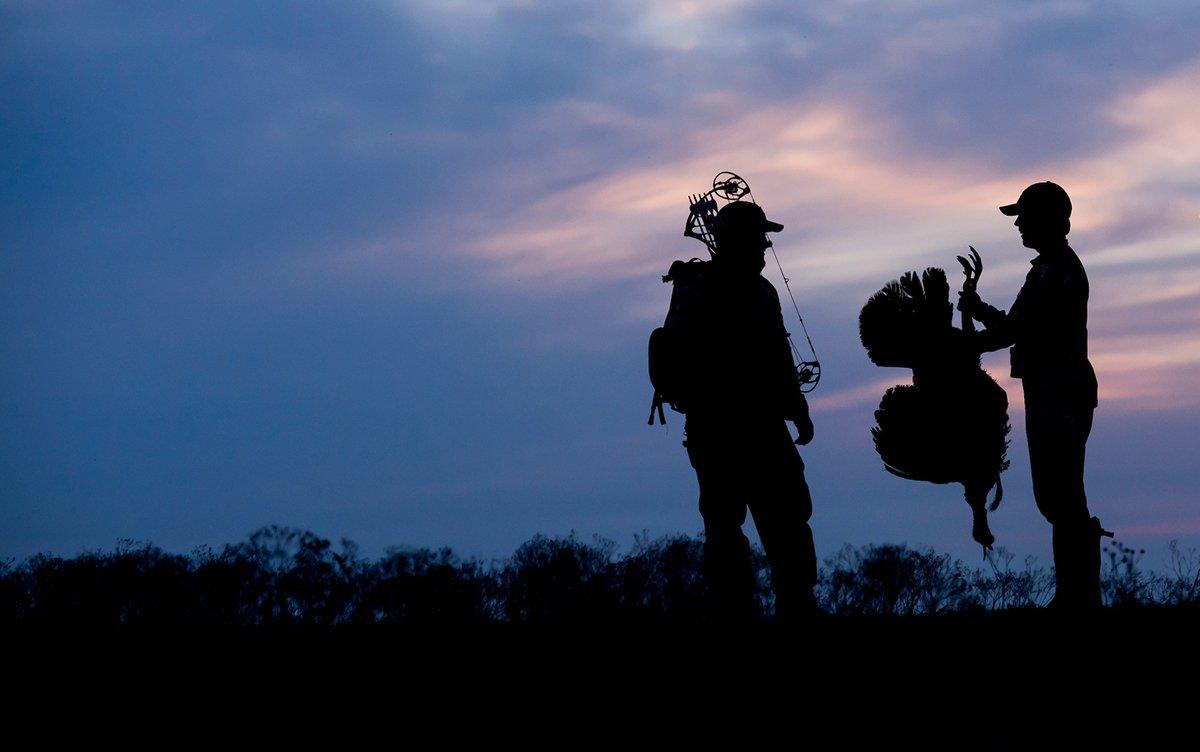What Is It?
By: Patrick Meitin
"How should I set up for bowhunting turkeys?"
This is a question I'm asked. Here are my thoughts:
I generally shun short bows whether they're compound or traditional. But when the subject turns to turkeys I lighten up on that conviction. This is directly related to how turkeys are bowhunted. You're either operating from inside a pop-up (most popular today) or sitting flat on your butt in natural cover. However, I've certainly bagged plenty of birds with longer compounds and true longbows from inside blinds and hunting on the ground.
Field & Stream Turkey Vest in Realtree Xtra
That said, short bows when combined with short-range shooting (anything more than 30 yards is pushing your luck with turkey and their baseball-sized vitals) give you more maneuverability in both cases. The industry trend of bow lengths under 34 inches, seems ideal for turkey hunting, Bows of those lengths are easier to handle and make avoiding top-limb contact with pop-up roofs easier and bottom-limb collisions with the ground less likely, especially if you're short in stature.
Other than that, my turkey bows exactly mirror big-game rigs with 70 pounds of draw weight as suited to turkeys as moose (or 45 to 65 pounds if that's your preferred draw weight).
When bowhunting big game my preferences typically lean toward ultra-bright fletchings and solid, fixed-blade broadheads. I want to see where my arrow goes after release, and I prefer the rock-solid reliability of such broadhead designs on big game.
When targeting turkeys, my preferences take a complete 180. Bright fletchings for turkeys are a mistake. This is especially true when hunting off the ground (which I prefer). Birds, unlike big game animals, perceive the full color spectrum. Bright fletchings are as glaring to them as they are to you and me. When fletching turkey arrows I choose camouflage browns, greens and black. Even better are camouflaged or barred versions of these colors. I even go so far as choosing Realtree versions of Easton's Axis, as an example, instead of plain black shafts. Turkeys live by their vision. I'll take every advantage I can get.

There's plenty of turkey ammo for the archer to choose from today. Some of the heads I've used to deadly effect include New Archery Products' Gobbler Getter (1 1/2" cutting diameter with blunted tip to impede penetration), Rocket Hammerhead, Vortex Mini-Max 3 and Rage (the latter all 2-inch cuts). These heads create big holes, turn marginal hits into dead gobblers, and slow penetration enough to regularly leave arrows in the bird and discourage locomotion.
Editor's note: This blog post was re-published from the original publish date.
Are you a bowhunter thirsty for knowledge? Check out our stories, videos and hard-hitting how-to's on bowhunting.
And follow us on Facebook. It's the 21st century, dude. Get with the program.








